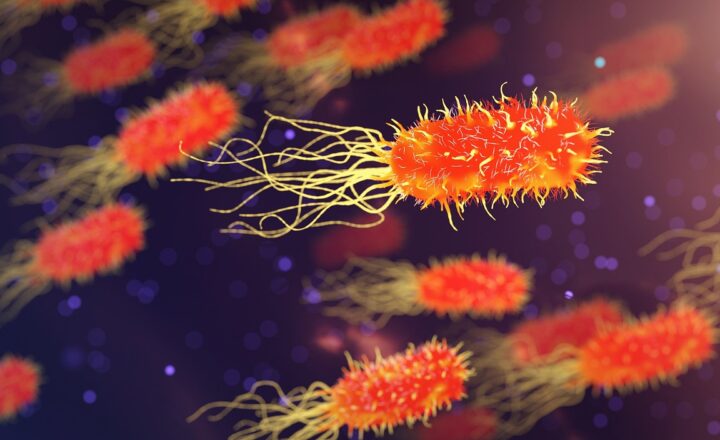How Humidity Is Measured and Why It Affects Our Everyday Lives
November 12, 2024

Humidity is a critical atmospheric condition that influences various aspects of our everyday lives, from weather forecasting to health and comfort inside our homes. This article will delve into the methods used to measure humidity and explore the profound effects of humidity on our well-being, the environment, and daily activities.
1. Understanding Humidity: What Is It?
Humidity refers to the concentration of water vapor present in the air. It is expressed as a percentage of the maximum amount of moisture the air can hold at a particular temperature. When the air is saturated, humidity reaches 100%, meaning it cannot hold any more water vapor, leading to phenomenon like rain or dew.
There are two primary types of humidity measurement:
- Absolute Humidity: This is the total mass of water vapor present in a given volume of air, typically measured in grams per cubic meter (g/m³).
- Relative Humidity: This indicates the current amount of water vapor in the air compared to the maximum amount it can hold at that temperature, expressed as a percentage.
Understanding humidity is vital because it impacts weather patterns, human health, and even our comfort levels indoors and outdoors.
2. How Is Humidity Measured?
Humidity measurement has evolved significantly over the years, and today, several methods are used to provide accurate and reliable readings. The most common devices utilized include:
- Hygrometers: These instruments measure humidity levels in the air by utilizing different technologies, including:
- Psychrometric Hygrometers: These work based on the principle of evaporative cooling. They involve two thermometers, one wet and one dry. The difference in temperature readings helps determine the humidity level.
- Electronic Hygrometers: Utilizing sensors, these devices provide digital readings of humidity levels, often using capacitive or resistive techniques to measure changes in humidity.
- Dew Point Hygrometers: These calculate humidity based on the temperature at which water vapor condenses into liquid, thereby providing a direct measurement of the moisture level in the air.
- Weather Stations: Many modern weather stations incorporate hygrometers along with various sensors to measure temperature, pressure, and precipitation, providing a comprehensive overview of environmental conditions.
- Satellite Remote Sensing: Advanced satellites can assess humidity levels in the atmosphere over vast geographical areas, aiding in climate research and weather forecasting.
The reliability and accuracy of humidity readings are crucial, impacting various industries, including agriculture, healthcare, and meteorology.
3. The Effects of Humidity on Our Lives
Humidity affects us in numerous ways, often without us realizing it. Here are some areas where humidity plays a pivotal role:
a. Health and Comfort
High humidity levels can lead to discomfort, making hot weather feel hotter because the body is less effective at cooling itself through perspiration. Conversely, low humidity can dry out the skin and respiratory passages, leading to irritation and increased susceptibility to illness. Extreme humidity levels can also exacerbate respiratory conditions such as asthma and allergies.
b. Weather and Climate
Humidity levels directly interact with temperature to influence local and global weather patterns. High humidity often precedes storms and heavy rain, while low humidity can indicate fair weather. Moreover, shifts in humidity are essential clues in climate change research, as changes in atmospheric moisture content can significantly impact ecosystem health.
c. Agriculture and Food Production
Farmers need to monitor humidity levels to optimize crop production. High humidity can promote crop diseases, while low humidity levels can affect plant growth and fruiting. Proper humidity management is crucial in food storage and preservation, as it can prevent spoilage and mold development.
d. Building and Indoor Environments
In indoor environments, humidity control is essential for maintaining comfort and preventing issues like mold growth, wood warping, and condensation. Using humidifiers and dehumidifiers, homeowners can regulate humidity levels to provide a healthier living space.
4. Optimizing Humidity Levels in Everyday Life
Understanding how to manage humidity levels can lead to improved comfort and health. Here are some practical tips:
- Use a Hygrometer: Invest in a reliable hygrometer to monitor humidity levels at home. Aim for a relative humidity level between 30% and 50% for optimal comfort and health.
- Ventilation: Ensure proper ventilation in your home by using exhaust fans in bathrooms and kitchens to eliminate excess moisture. Open windows when weather permits to allow fresh air circulation.
- Dehumidifiers and Humidifiers: Utilize dehumidifiers during humid months and humidifiers during dry seasons to maintain balanced humidity levels in your indoor spaces.
- Houseplants: Some indoor plants can help regulate humidity levels, while others may release excessive moisture. Choose houseplants wisely to contribute positively to your indoor humidity levels.
By keeping humidity levels in check, you can create a healthier and more comfortable living environment.
Conclusion
Understanding how humidity is measured is vital for recognizing its significant impact on our lives. From health implications to weather patterns, humidity is a powerful force that shapes our day-to-day experiences. By learning to manage humidity intelligently, we can improve our comfort levels, promote a healthier living environment, and even enhance agricultural productivity. Humidity is not just a meteorological term; it touches lives in numerous profound ways.
As a critical component of the atmosphere, recognizing and respecting the influence of humidity can empower us to make informed decisions in both our personal and professional lives. Whether you’re a homeowner, a farmer, or simply someone looking to improve your everyday experiences, appreciating the nuances of humidity can foster a better understanding of our environment and ourselves.






